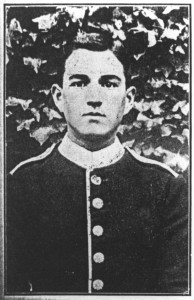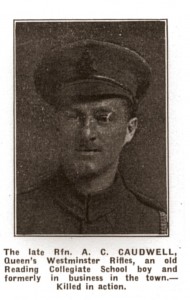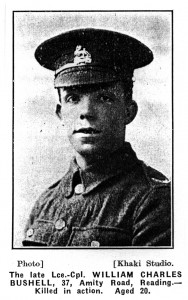Hebert George Clarke
Private 17289
2nd Battalion Hampshire Regiment.
 |
![dbImage[1]](http://cemeteryjunctionwargraves.org.uk/wp-content/uploads/2013/11/dbImage1-300x225.jpg) |
Herbert Clarke lived at 6 River Road Reading. He was a member of the regular army as indicated by being a member of the 2nd Battalion of the Hampshire Regiment. As such he was part of the initial British Expeditionary Force(BEF).
The Standard December 12th 1914 reports that Herbert was injured at 1st Ypres when the fourth finger of his left hand was blown off. It was recorded that his hand was bandaged by chums and that he had to tramp ten miles before being surgically treated.
In the spring of 1915 he landed at ‘V’ beach on the Gallipoli peninsular. His battalion were on board an old collier the ‘River Clyde’ and the landing did not go according to plan . The whole campaign was destined to fail with great loss of life the Turks always had the upper hand and the high ground. Herbert was one of the lucky ones, he survived the ordeal of the landing. He spent at least three more months on the peninsular, although nothing particular is known of his experience whilst there, although we can guess that it was neither a pleasant or easy. The heat was intolerable, sanitation appalling, the dead largely remained unburied, flies were every where and dysentery was endemic because clean fresh water was difficult to get.
Herbert was still in the Dardanelles when preparations were being made for the next ‘push’ due to start on the 6th August 1915. The attack was to follow the celebration of first anniversary of the war, if celebration can be said to be the correct term as by now Britain had lost 76,000 men killed, 252,000 wounded and 55,000 missing a total of 383,000 men.
Herbert lost his life on the opening day of the battle. He had no know grave and was commemorated upon the Helles memorial. The CWGC record bears no family details and it has been impossible to find any personal details. He is commemorated upon the Alfred Sutton School War Memorial.

